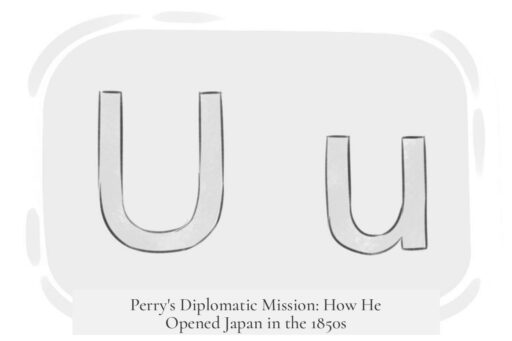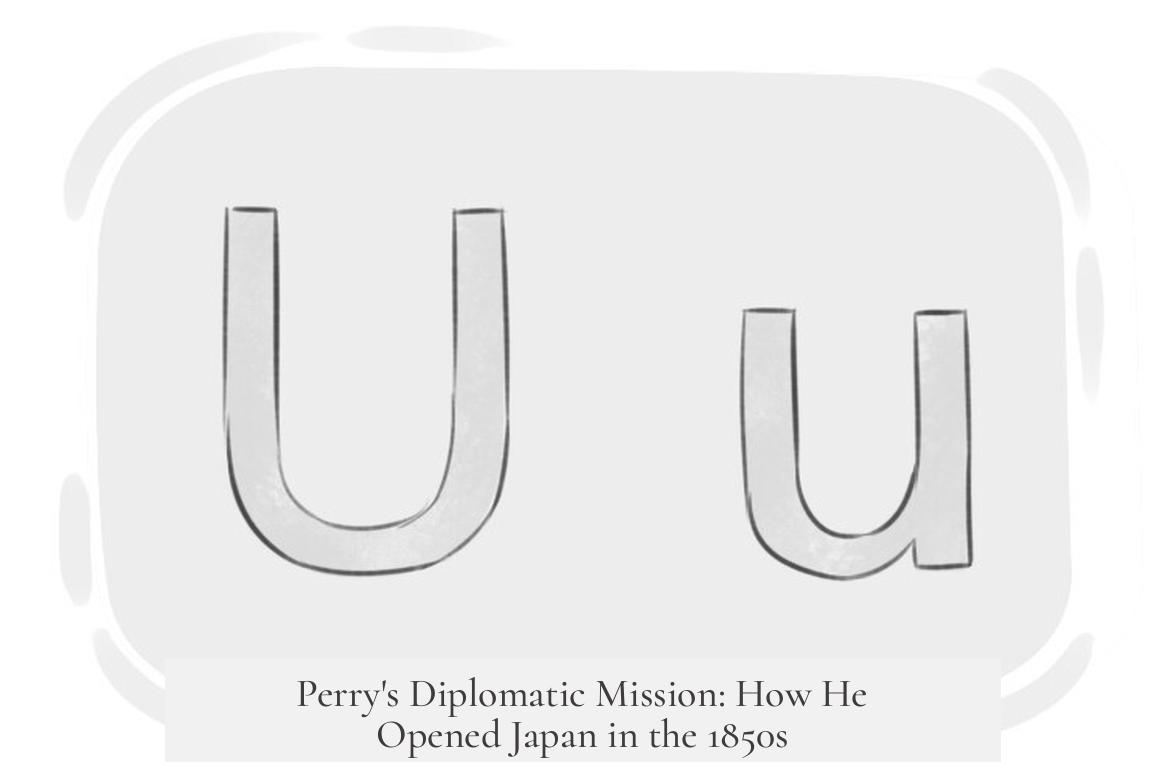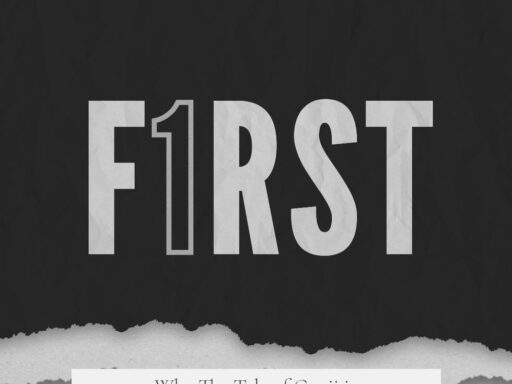Commodore Matthew Perry “opened up Japan” by combining careful preparation, strategic naval power display, and diplomatic negotiation that led to the signing of the Treaty of Kanagawa in 1854. His approach balanced firm pressure with respect for Japanese customs, achieving what previous American missions could not.
Perry thoroughly studied previous failed attempts to contact Japan. He researched Japanese culture and the political structure carefully, understanding that Japan was under the rule of the Shogun, though the official letter he carried was addressed to the Emperor. This research informed his strategy for success.
His plan involved two visits to Japan. The initial arrival was in 1853. During this visit, Perry deliberately defied Japanese authorities by refusing to enter the port they designated. Instead, he anchored his fleet in Edo Bay, demonstrating American naval power with advanced shell-firing cannons. This visible show of force implied potential consequences without making a direct threat.
Perry’s primary demand on this first visit was to have a letter from U.S. President Millard Fillmore delivered to the Emperor of Japan. This letter proposed a treaty with five specific clauses designed to establish peaceful relations and practical cooperation. Perry then departed, allowing time for the Japanese government to consider the proposal without immediate pressure. This withdrawal helped Japanese leaders save face, a crucial factor in their decision-making.
| Proposed Treaty Clauses | Description |
|---|---|
| 1. Peace and friendship | Establish peaceful diplomatic relations between the United States and Japan. |
| 2. Opening of two ports | Allow American ships to dock at designated ports for trade and supplies. |
| 3. Assistance to shipwrecked Americans | Provide help and protection to American sailors who might be stranded along the Japanese coast. |
| 4. Purchase of coal and provisions | Permit Americans to buy essential supplies like coal and water during their visits. |
| 5. Most favored nation clause | Guarantee that any privileges granted to other countries would also extend to the United States. |
The contents of the letter reflected a limited set of requests, each of which had some precedence in Japanese tradition or international norms. This careful limitation minimized Japanese fears of overreach while fulfilling American strategic interests.
Perry’s second visit in 1854 confirmed the approach’s success. Upon returning, he found that Japan agreed to the treaty’s terms as originally proposed. The Treaty of Kanagawa was signed, marking the end of Japan’s policy of national seclusion and opening ports like Shimoda and Hakodate to American ships.
The success of Perry’s mission stemmed from several key elements:
- Deliberate defiance of Japanese orders to assert strength and seriousness.
- A veiled but unmistakable demonstration of naval power creating psychological pressure.
- Demanding only delivery of a letter rather than direct aggressive demands, allowing Japanese face-saving.
- Careful timing by departing to let Japanese authorities discuss the proposal without immediate coercion.
- Proposing a very limited, manageable treaty focused on practical and reciprocal benefits.
- Scheduling a return visit to receive the answer, showing confidence but patience.
Perry’s method succeeded because it combined military intimidation with diplomatic subtlety informed by cultural knowledge. It respected, to an extent, Japan’s social and political framework while conveying American determination. This mixed strategy persuaded Japanese leaders that engagement was inevitable and preferable to conflict.
- Perry’s detailed research of Japan informed his strategy.
- He used a two-visit approach with a first show of force and a second treaty negotiation.
- The initial visit involved delivering a limited treaty proposal letter.
- Perry’s naval demonstration pressured Japan without direct threats.
- Japan accepted the treaty in 1854, opening ports to the U.S.
- The strategy balanced military power, diplomacy, and cultural respect.
How Exactly Did Perry “Open Up Japan”? A Deep Dive into History’s Boldest Diplomatic Move
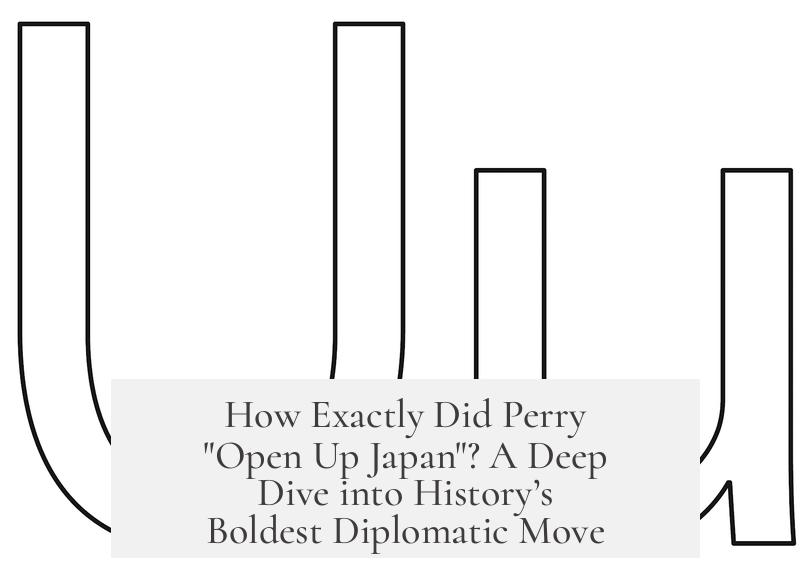
In short, Commodore Matthew Perry “opened up Japan” through a masterful blend of preparation, naval power, and a finely tuned negotiating strategy that respected Japanese culture while asserting American interests. Let’s unpack how this diplomatic move unfolded and why it worked so well.
Think about Japan in the mid-1800s. The country was a fortress, locked behind the Sakoku policy that shut its doors to most foreign contact for over 200 years. No trade. No diplomatic visits. Essentially, Japan was the ultimate “Do Not Disturb” sign. Enter Perry, a man who didn’t come to negotiate through snail mail or polite notes. He came with steamships, guns, and a plan.
Preparation: Perry Does His Homework Like a Diplomat and a Detective
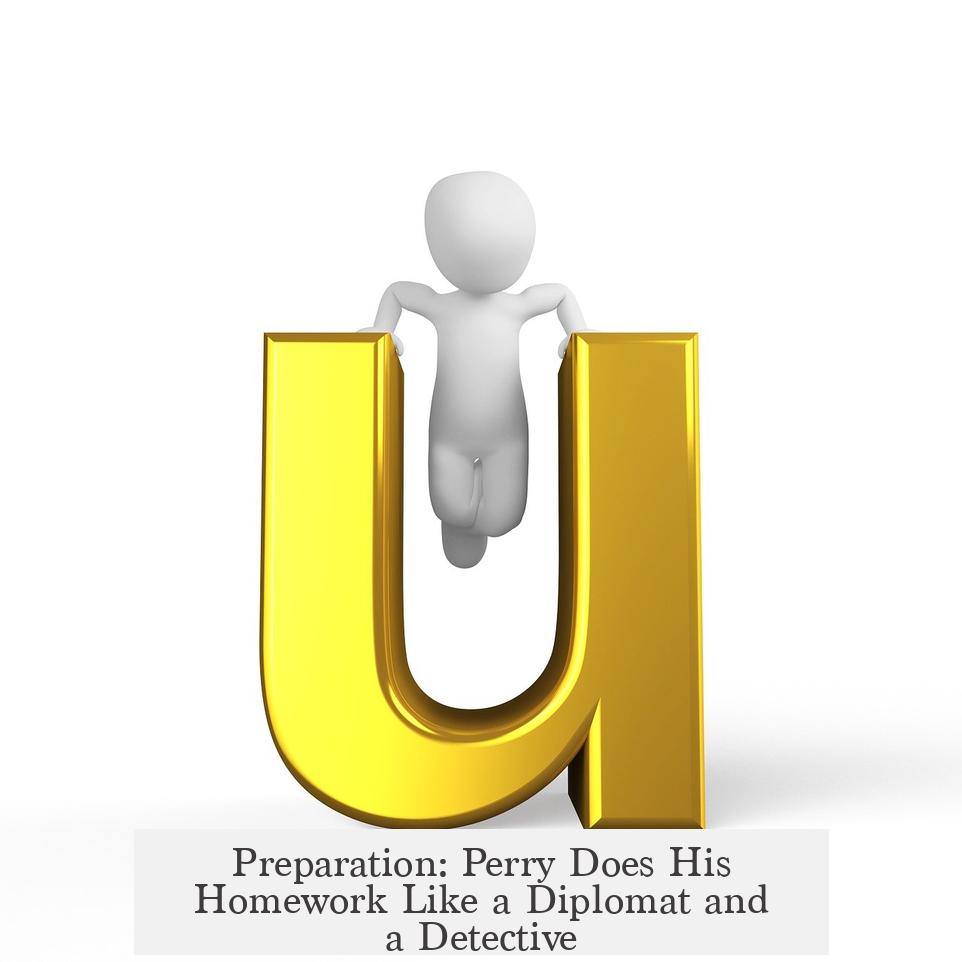
Before Perry’s ships even touched Japanese waters in 1853, he was deep in preparation mode. He wasn’t winging it. Perry studied every scrap of information he could find about Japan—past failed missions, cultural nuances, political structure, and even the symbolic importance of its rulers. This wasn’t your average vacation cruise; it was a strategic operation. He designed a two-visit plan where the initial visit would make a statement, and the follow-up would secure agreements.
What’s impressive here is Perry’s respect for information. He knew the difference between charging in blindly and negotiating with knowledge—sweet spot right there.
The First Visit (1853): Showing Up Like You Mean Business

When Perry first arrived in Edo Bay, modern-day Tokyo Bay, he was anything but shy. Refusing to follow the Japanese authorities’ instructions about where to dock sent a clear message: this was not just another polite envoy. Perry’s fleet showcased cutting-edge shell-firing cannons—essentially the 1850s version of flexing with the latest tech.
But here’s the kicker: Perry didn’t whip out demands or bombs. His only explicit ask was to present a letter from the U.S. President to the Japanese Emperor. A small, symbolic gesture—but one loaded with meaning. Japan’s government operated under the Shogun’s authority, not the Emperor’s, so demanding the letter be delivered to the Emperor was both audacious and respectful. It put the Shogunate in a tricky spot: deny the letter and offend tradition, accept it and open the door.
After delivering the letter, Perry sailed away, giving Japan six months to think it over. This move saved face for the Japanese, an essential aspect of their culture. He didn’t trap them into a corner but extended a diplomatic olive branch wrapped in a subtle threat of naval power.
The Genius Behind Perry’s Negotiation Strategy

Perry’s strategy was a game of psychological judo, balancing intimidation with respect and patience. He never directly threatened military action but made sure the Japanese understood the capability and readiness of his fleet—a classic “HI, WE CAN DO DAMAGE” sign—but politely implied, not shouted. This veil of force allowed Perry to negotiate without immediate confrontation.
Meanwhile, insisting on a letter to the Emperor wasn’t just naive. It may have been a bit of American ignorance about Japan’s government, but it also cleverly pressed Japanese diplomats into action since it would be “rude” to refuse a letter meant for the highest symbol of authority. Perry was playing on cultural etiquette as much as military power.
Finally, by sailing away after the letter’s delivery, Perry let Japan’s leaders save face. It wasn’t an ultimatum. It was a diplomatic invitation backed by visible power.
What Was Actually in the Letter? The Five Key Clauses
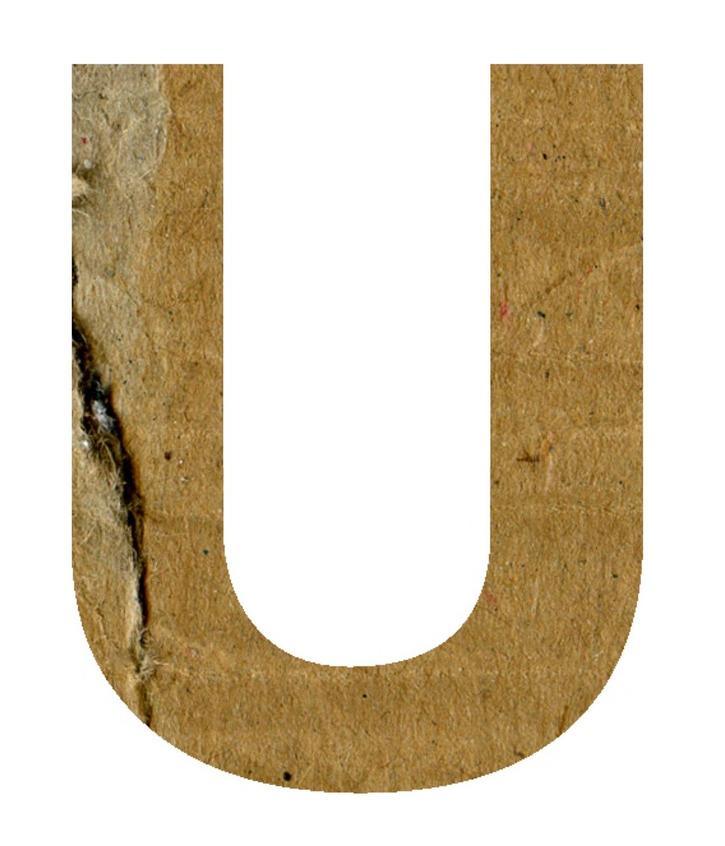
The letter wasn’t a laundry list of demands. Instead, it proposed a treaty with just five clauses:
- Peace and friendship between the United States and Japan.
- Opening of two Japanese ports to American ships.
- Provision of help to American shipwrecked sailors on Japanese shores.
- Permission for American ships to buy coal, water, and supplies in Japan.
- A “most favored nation” status, meaning if Japan gave others privileges, those would also extend to the U.S.
Notice the simplicity and precedent here? None of these requests were outrageous. They echoed existing norms and respected Japan’s sovereignty, making acceptance easier.
The Second Visit and Treaty Success (1854)
Six months later, Perry returned. The Japanese had decided to accept the treaty. The combination of Perry’s steady show of power, the cultural balance of respect, and the strategic simplicity of his demands convinced Japan to step into a new era.
With that, Perry’s fleet became the key unlocking Japan’s isolation. The country soon signed treaties with other powers, igniting rapid modernization and international engagement.
Takeaway: Perry’s Opening of Japan Was a Masterclass in Strategy and Respect
Perry’s success didn’t rely on firepower alone. Yes, those shell guns were impressive. But it was the nuanced strategy engaging culture, patience, and a clever negotiating stance that “opened up” Japan.
He demonstrated determination by entering Edo Bay. He defied instructions, not with arrogance but with clear purpose. His veiled but undeniable force made the Japanese government take him seriously. Yet, he demanded only what was culturally respectful—a letter delivered to the Emperor—allowing Japan to maintain dignity. By withdrawing after the first visit, he gave Japan the time to consider, avoiding immediate conflict.
His proposed treaty was simple and sensible. Limits were respectful to customs and current practices. His return sealed the deal.
So, here’s a question: Can today’s diplomats learn from Perry’s balance of strength and subtlety? What might it look like to combine cultural understanding with strategic force in modern negotiations? Perry’s story offers a blueprint for opening even the most locked doors, literally and metaphorically.
Opening Japan was not just a naval triumph; it was a nuanced victory of planning, patience, and respect—an example that still echoes in the art of diplomacy today.
